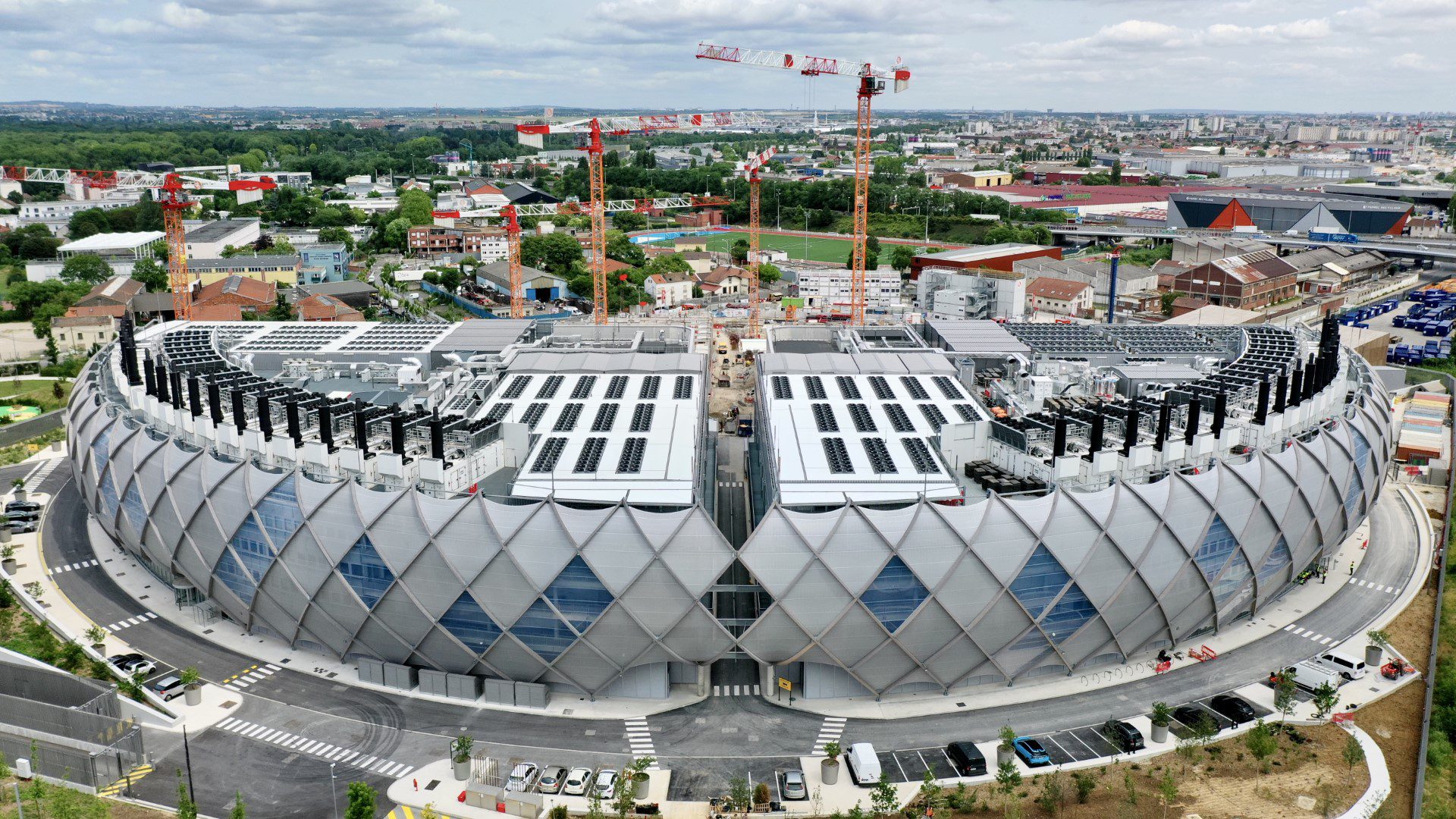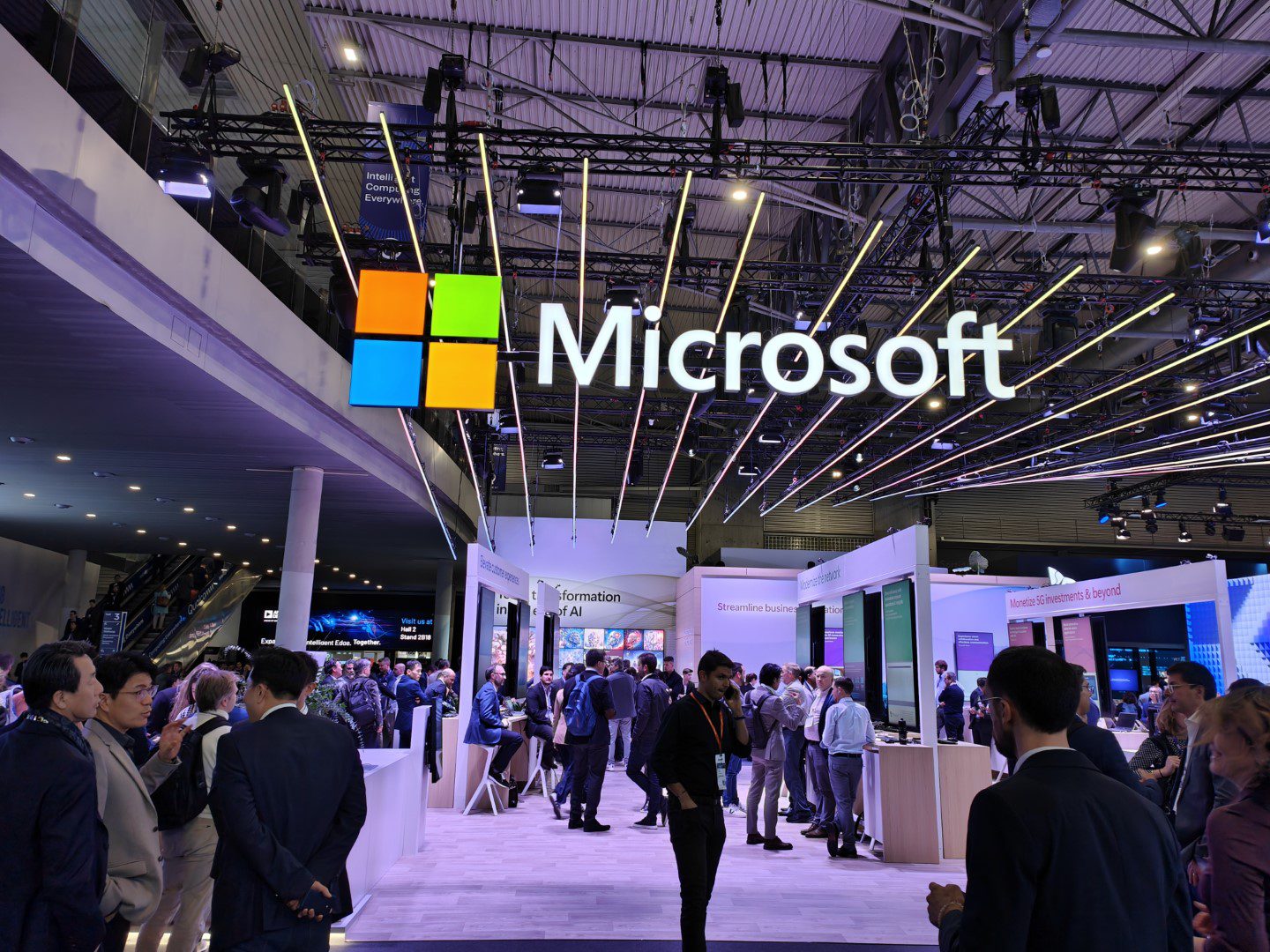Data centers are mushrooming as server density increases at existing sites, driven by AI. At its Innovation Summit, Schneider Electric explains how a good approach to this development leads to environmentally responsible results. We even walk through a large new data center to learn exactly what that means.
When we arrive at Par08, we think for a moment that we are entering the little brother of the Stade De France. The impressive structure looks like half a stadium and is secured by large fences and a vehicle corridor. Inside we find one of Digital Realty’s eleven data centers in and around Paris.
Our tour bus, full of journalists, has come straight from the Schneider Electric Innovation Summit across town. Schneider Electric has a lot to say about greening data centers and a visit to Par08 is designed to demonstrate this in practice.
Race for more data centers
The brand new and futuristic data center is an indicator of the state of the market today. “I could build any data center if I could find enough land with connectivity and power,” said Dame Dawn Childs, CEO of Pure Data Center Group, during a panel discussion at the Innovation Summit. “There is a race to build sufficient capacity.”
Schneider Electric wants to play an important role in this race. A data center cannot exist without electricity and cooling, and the French multinational has modern and ecological solutions for both. With the growing enthusiasm around AI, the importance of the supporting infrastructure for the increasingly powerful and warmer servers is increasing.”
“The biggest challenge for the future and especially for AI is the availability of electricity,” says Marc Garner, Senior VP Secure Power at Schneider Electric Europe. “This will also be the most limiting factor. The geography around data centers will evolve depending on the available electricity.”
More density
In Par08 we see control cabinets and CDUs (Coolant distribution units) in the building and efficient Turbocor chillers on the roof. The electrical equipment and efficient cooling from Schneider Electric ensure that Digital Realty with its new data center within the PUE (Power consumption effectiveness) EU targets. In concrete terms, this means that the data center must have a PUE of less than 1.3.
“Computing power is becoming increasingly concentrated, with a higher kilowatt density per square meter,” says Fabrice Coquio, Managing Director of Digital Realty in France. “Six to eight kilowatts per rack is now the standard, but in extreme cases it can be up to 90 kilowatts. Above 20 kilowatts, cooling with light is no longer possible, and liquid cooling becomes unavoidable.” In collaboration with Schneider Electric, the data center was equipped with the necessary infrastructure to make this possible.
Computing power becomes more concentrated, with a higher kilowatt density per square meter.
Fabrice Coquio, Managing Director Digital Realty France
In the Digital Realty data center, we get a taste of what this heat buildup means. The large server halls are not yet completely full, but behind secure fences, servers belonging to colocation customers are already generating so much heat that we feel like we are walking past a row of hair dryers. These are the classic air-cooled models. Water-cooled servers generate more heat, but you feel it less when you walk past them.
The technology is there
Schneider Electric is using its summit to highlight that it is ready for the transition to AI and higher-density servers. To illustrate this, the company is launching reference designs for AI clusters with Nvidia, both for new and existing data centers.
“Most of the technology for future-oriented high-density data centers is already in place,” emphasizes Pankaj Sharma, EVP Secure Power Division & Datacenter Business. “Now it’s about rolling it out on a large scale.”
Most of the technology for future-oriented, high-density data centers already exists.
Pankaj Sharma, EVP Secure Power Division & Data Center Business Schneider Electric
This is easier said than done. For example, Schneider Electric devotes a lot of time at its conference to its state-of-the-art UPS systems that are compatible with modern Li-ion batteries. For example, we see a demo of the Galaxy VXL UPS: a large cabinet filled with electronics and connected to batteries that ensures that servers in a data center do not experience interruption in the event of a power outage while the generators start up. The system also protects against fluctuations in the mains voltage, to which IT equipment is sensitive.
The VXL UPS offers many advantages. In combination with Li-Ion batteries, the device has a higher density than classic lead-acid battery alternatives and lasts three times longer. The UPS shown also has an efficiency of up to 99 percent, while other solutions reach peak values of 96 or 97 percent, although Schneider points out that this efficiency is a property of the UPS itself and is also achieved with other batteries in the VXL system.
And lo and behold: When the door to the UPS room in Par08 opens, we see rows of a type of car battery: a classic UPS based on lead-acid batteries. Despite the advantages of lithium-ion batteries, customers in the data center remain hesitant about the new technology, which is why Digital Realty also opts for the classic solution.
Priority for trusted solutions
Even with low PUE and higher data center density in mind, trusted solutions remain popular. For example, on the roof of Par08, behind the Turbocor chillers and huge heat exchangers, we see 36 huge diesel generators that can generate enough power to keep the data center running if the power goes out. The engines remind us of cars and trains or ships. The smokestacks squeak neatly over the edge of Par08 and are also visible from the outside.
Aren’t there any better alternatives? Not really: the generators can run on ecological fuel, but they aren’t actually used that often. Their emissions therefore remain limited overall.
Sustainability and innovation: not enemies
After visiting the data center, we return to the Innovation Summit with the journalists present. There, Schneider Electric green is the theme color and sustainability is the word of the day. Data centers are considered to be major energy guzzlers, but in fact the buildings are very efficient thanks to modern cooling and power consumption.
Schneider Electric wants to show that its hardware and software offers solutions. “If we implement AI correctly, we will also achieve efficiency gains in our energy grid,” predicts Garner. “The power grid will continue to change. We will see more and more solar panels connected to batteries that can feed power back into the grid when needed. This requires the right automation and intelligence. This is how we move further towards net zero.”














